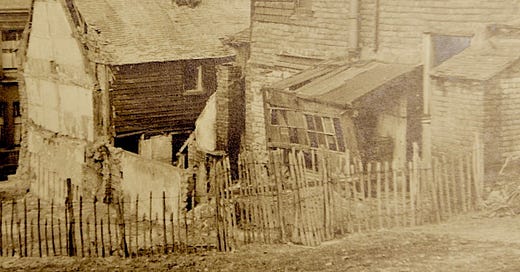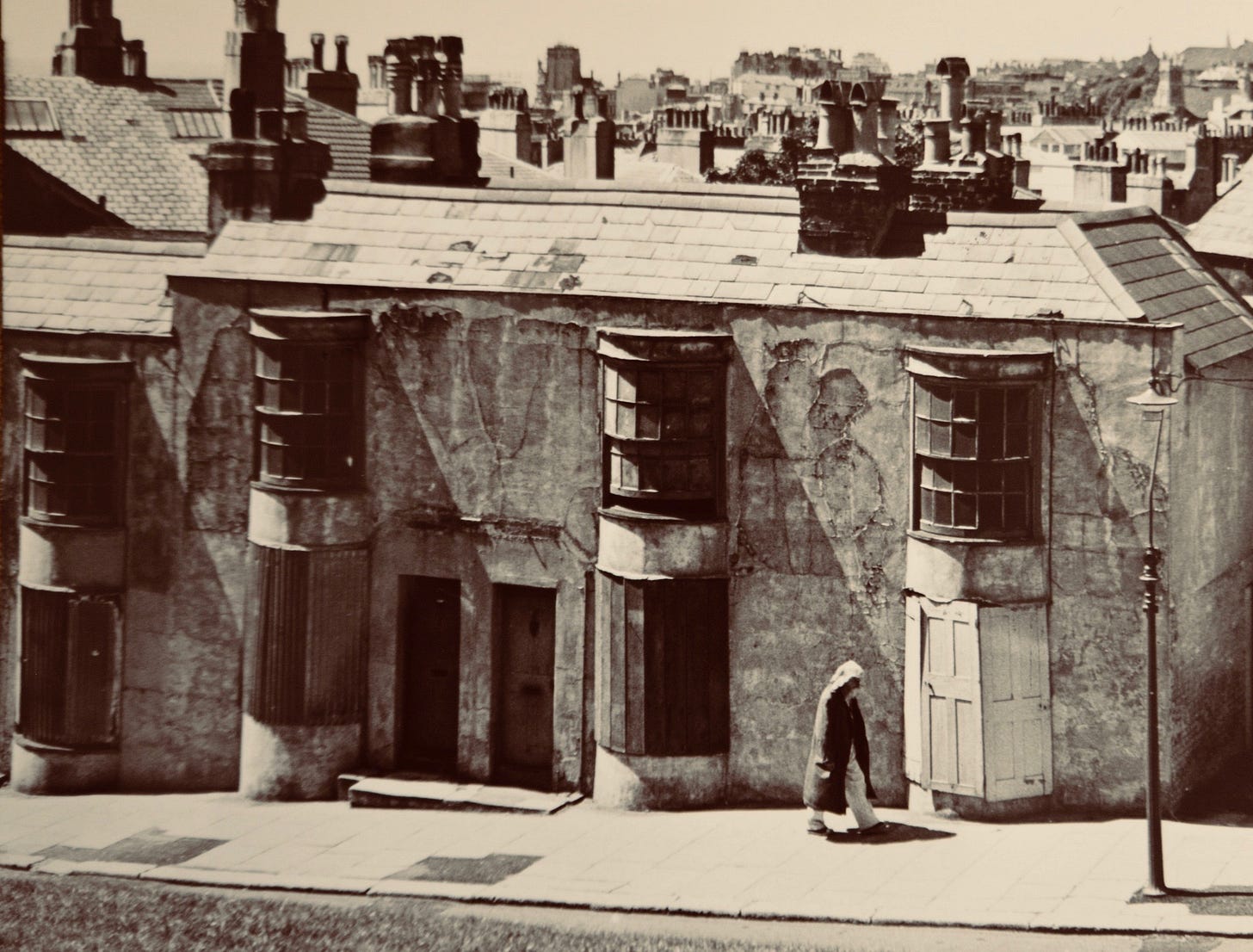Hastings Old Town bursts with vibrant art, music, and a lively atmosphere that draws visitors in. Its narrow lanes, historic homes and quirky shops give the town a unique charm. The area is full of generous, bright, creative people.
Before you consider moving to Hastings, it's important to know a bit about its history. Many houses here are over 150 years old. While some of them look impressive, the quality of workmanship and materials was often poor. Throughout the years, Hastings went through economic ups and downs, and the old properties fell into disrepair. Hundreds of homes were demolished in slum clearances.1
Photos from the 1950s and 60s show a grim picture with collapsing roofs, peeling paint, and broken windows. It's no surprise that many residents moved away in search of modern homes with indoor toilets, better ventilation and central heating. An elderly neighbour told me that children from the new estates avoided playing with kids from the Old Town as they were thought to have fleas!
Fast forward to today: when the owner of a stately Georgian house called in builders for repairs, they uncovered a nightmare of rotten timbers, crumbling brickwork, and botched repairs. An engineer was called in to prop up the house, which now requires hundreds of thousands in repairs and is currently valueless.
My street was riddled with damp and decay. One home was narrowly saved from the wrecking ball, despite being condemned. A surveyor advised its new owner to walk carefully around the edges of rooms to avoid falling through the rotting floors.
Recently, I began searching for a house with a bigger garden and viewed a nearby property that needed renovation. The estate agent assured me it was a "good, honest house," but I soon discovered that previous buyers had backed out after surveys revealed that making it safe would cost double the asking price.
Around 20 years ago, people from outside Hastings started purchasing these old, rundown homes and transforming them. They restored period features and opened new businesses, breathing life into the town.
The journey has been tough for many - I've witnessed people moved to tears by the stresses of unexpected repairs and financial strains. My renovations took two years, during which I slept on a dusty mattress, endured months without a back door, a flushing toilet, or hot water. I don't expect to make a profit when I eventually sell; I did the work because I loved the house and the community.
Sadly, as many Old Town homes have been beautifully renovated, some locals have become upset about rising property prices, claiming the houses were just fine as they were. Yet, they shy away when an unrestored home comes onto the market.
Some locals blame the influx of renovators for spoiling the area, and some have even resorted to vandalism - breaking windows, spraying graffiti, or throwing eggs at doors. A few have taken to calling us F.I.L.T.H (Failed in London, Try Hastings), viewing the new shops as an affront to the town's old-fashioned seaside character.
Yet in the end, it is the FILTH that breathed new life into Hastings Old Town and prevented more old houses from being demolished. Their dedication and hard work have transformed a declining area into a vibrant community, and for that, we should be grateful.
The Slum Clearance Act allowed the council to classify homes as slums, regardless of their condition. Many solid properties were incorrectly labelled by council officials as 'unfit for habitation' and purchased for a fraction of their true value. For example, fish seller Henry Johnson was paid just £15 for a seemingly sound house worth £300 on the market.
All these misidentified properties were demolished to make way for a new road. The evicted families became council tenants on the outskirts of town. In 1939, one of the council officials admitted that the slum clearance was essentially an “act of robbery.”







